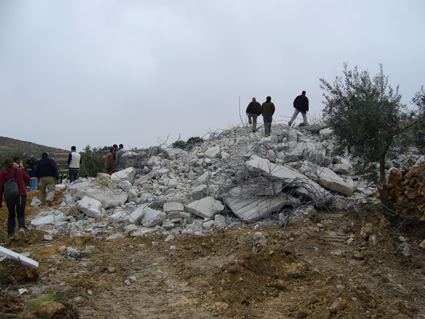Category: Features
-
Ruthless killing of Palestinian youths in al-Khalil (Hebron)
17th October 2015 | International Solidarity Movement, al-Khalil team | Hebron, occupied Palestine ******* UPDATE 9pm: No stop to violence, settlers are taking over the streets The Tel Rumeida neighbourhood of al-Khalil is on lockdown for Palestinians. Palestinian residents and internationals are not allowed to be on the streets, on their own roofs or at…
-
Senseless Israeli violence against demonstrators in Gaza
17th October 2015 | International Solidarity Movement, Gaza team | Gaza, occupied Palestine At yesterday’s demonstrations in Nahel Oz (east of Shijaia) and Erez Border (Beit Hanoun), 2 Palestinians were killed by Israeli forces and almost one hundred were injured. Yahiya Abd al-Qader Farhat, 24 years old, and Mahmoud Hatim Hmeid, 22 years old were…
-
Palestinian and international civilians to resist revenge home demolitions
16th October 2015 | International Solidarity Movement, Al-Khalil team | Nablus area, occupied Palestine Palestinian civilians joined by International solidarity activists will gather tonight, Friday 16, October 2015, at the Nablus city homes of Yahya Hamad, Karam Al-masri and Sameer Al-kosa after Israeli forces threatened revenge demolitions within 24 hours. Yesterday night, hundreds of Palestinians…


